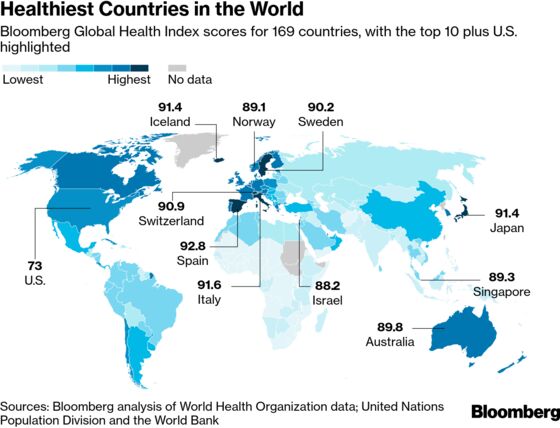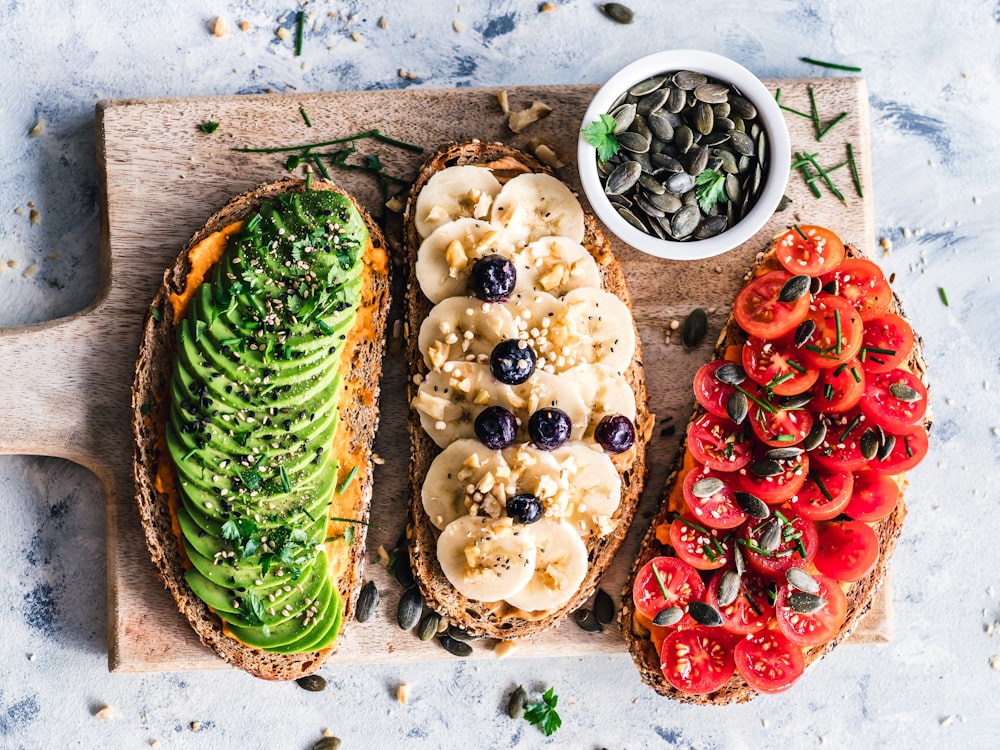Healthy diets are an essential part of a healthy life. After all, a poor lifestyle leads to bad health. It causes obesity, thyroid problems, diabetes, blood pressure, fatty liver, and heart diseases. There’s truth in the saying, “You are what you eat.”
Unhealthy diets are a wide-spread issue, causing significant impacts to global health. Worldwide, 600 million people are obese today. Additionally, close to 463 million people in the world had diabetes in 2019. Obviously, we need to do something to fix this problem.
It’s no big secret that a healthy lifestyle combines a healthy diet and enough exercise. However, the diet industry is big business, making informed decisions difficult. Luckily, THRIVE is here to offer an evidence-based approach, examining the healthiest countries in the world to see what they’re doing right.
Healthy Diets Around the World
In 2019, Mediterranean and Scandinavian countries topped the Bloomberg healthiest country index. Naturally, this ranking attracted the world’s attention; what are they doing right? Unsurprisingly, those countries which ranked highest boast nutritious diets and healthy lifestyles. The geographic regions which performed poorly on this index include primarily South American, Middle Eastern, and Asian countries.

Good habits like regular sleep, a healthy diet, and physical activity are the basis of a thriving life. On the opposite side, bad habits harm health. These include smoking, overeating, excessive alcohol intake, and not exercising, among others.
7 Healthy Diets Favouring a Healthy Lifestyle
In today’s globalised world, there are plenty of diets to choose from. You can even come up with your own diet and still be healthy. If you want guidance, though, we’ve narrowed the choices down to seven of the most popular healthy diets. Health experts recommend these diets to their clients to support a healthy lifestyle. Luckily, there is a diet to suit every individual.
1. Vegan Diet- A Sustainable Diet that Avoids Animal Products
A vegan diet consists of plant-based nutrients like vegetables, cereals, nuts and fruits. Unlike vegetarians, a vegan diet cuts out all animal products, which includes foods such as dairy and eggs. This is part of the reason why vegan diets are great for the environment. Instead, vegans rely on dairy substitutes like soy and almond milk.
In a vegan diet, protein comes from pulses, beans, and lentils. The nutrition is further improved by consuming microgreens, wheatgrass, and sprouts.
Of course, eliminating animal products doesn’t automatically make a diet healthy. It’s important to choose foods that cover all nutritional requirements. That said, a balanced vegan diet is a very healthy diet. It checks cholesterol and prevents colon cancer. Also, diabetics can use a vegan diet to lower blood sugar levels. Vegan diets are quite popular in Scandinavian countries.

2. Mediterranean Diet- A Versatile Diet
Dieticians consider the food habits of Mediterranean countries to be very healthy. Diets there are rich in fibre and include plenty of fresh fruits and vegetables. Walnuts and olive oil are important sources of healthy fat. These diets also typically include various types of cheese, fresh herbs, and lentils.
The Mediterranean diet also includes specific eating patterns. It involves having two servings of fish or seafood every week. It also includes vinegar and oil, which help with the digestion of proteins. The Mediterranean diet contains very little sugar and red meat. It also stresses the importance of exercise and good sleep.
The Mediterranean diet is a nutritious diet with many health benefits. Studies show that it often leads to weight loss and prevents diabetes and cancer, while promoting a healthy heart and brain.
3. Keto Diet – A Healthy Diet that Favours Fats
You’ve probably heard of people using keto diets to lose weight. It’s a diet plan based on consuming foods high in fat and almost no carbohydrates. Removing carbs from the diet puts the body in a ketosis metabolic state. This means the body now starts burning fat for fuel instead of glucose.
The keto diet plan includes eggs, olives and olive oil, meat, poultry, and seafood. It comprises high-fat dairy, berries, cruciferous vegetables, coconut oil, nuts and seeds.
Many doctors believe that the keto diet causes weight loss. This helps it to prevent lifestyle diseases like diabetes. It’s also believed to help prevent cancer.
4. Intermittent Fasting- A Diet that Encourages Fasting
Intermittent fasting means eating during a specific time window every day. For the rest of the day, the body is in a state of fasting. That means no calories, but you should still keep your liquids up. Just make sure your drinks are zero-calorie. Water is the obvious choice, but you can also drink no-calorie soft drinks, black coffee, tea without milk and sugar, and herbal teas. The purpose is to restrict the calories consumed at least twice a week.
This healthy diet can help reduce weight. Furthermore, intermittent fasting prolongs life by reducing inflammation and preventing diabetes. Plus, it can help improve your sleep!
5. Calorie Tracking – A Points-Based Diet
There are a variety of points-based diets which primarily work by tracking calories. These can help motivate people to have a healthy life. Every food item here has specific points according to its nutritional content. These diets work best with the help of specialised apps which keep track of both calories and weight. Such apps provide digital instructions and a sense of accountability to dieters. It also measures their progress.
An example of a calorie tracking diet is programs such as Weight Watchers. A Weight Watcher diet is for people leading a busy life who can’t go to fitness centres. Additionally, Weight Watcher offers specific plans to suit different dieting needs.
This diet plan encourages people to lose weight. Plus, it claims to help manage lifestyle diseases like diabetes and high blood pressure.
6. Paleo Diet- A Healthy Diet Inspired by Ancient Hunter-Gatherers
The paleo diet aims to copy the food habits of ancient hunter-gatherers. It’s important to note that this diet is very restrictive, cutting out many healthy foods. Thus, it’s not suited to everyone. There are also several variations, not all of which have been scientifically tested. If you wish to try a paleo diet, THRIVE recommends following the original diet created by Dr. Loren Cordain. This diet also recommends including physical activity to achieve the best results. The diet bars foods such as sugar, processed foods, trans fats and vegetable oils. Instead, it lays stress on a high animal food intake, which unfortunately means this diet is less sustainable. Such foods are meat, fish and eggs. This diet also favours fresh fruits and vegetables, nuts and healthy fats.
Paleo diet can lead to healthy blood glucose and lowers blood pressure and cholesterol. Further, it supports weight management and reduces body fat.
Human Thrivability and a Healthy Diet
Ultimately, none of these diets are necessary to achieve a healthy lifestyle. Simply managing your caloric intake while meeting your nutritional needs is enough. These diets simply represent different ways of achieving that. We also recognise that not everyone has equal access to healthy foods. So, remember to adjust any diet to match your individual circumstances.
Achieving good health and wellbeing for all is the third goal of the United Nations Sustainable Development Goals. Having a healthy diet and lifestyle is crucial to that goal. The good news is any of the diets above will work to help people thrive. However, governments, educators, and health professionals must do their part to ensure everyone knows what foods are healthy and have access to those foods.
Not all health issues are caused by poor diets. Still, an active life and a healthy diet can make a big difference.
Want to increase human wellbeing and help make the future thrivable? Share this article to your friends and family, to spread the word. You could even consider volunteering with us!
This article was produced with contributions from Prathap Moola, Gaurav Kumar, and Rebecca Deer.























